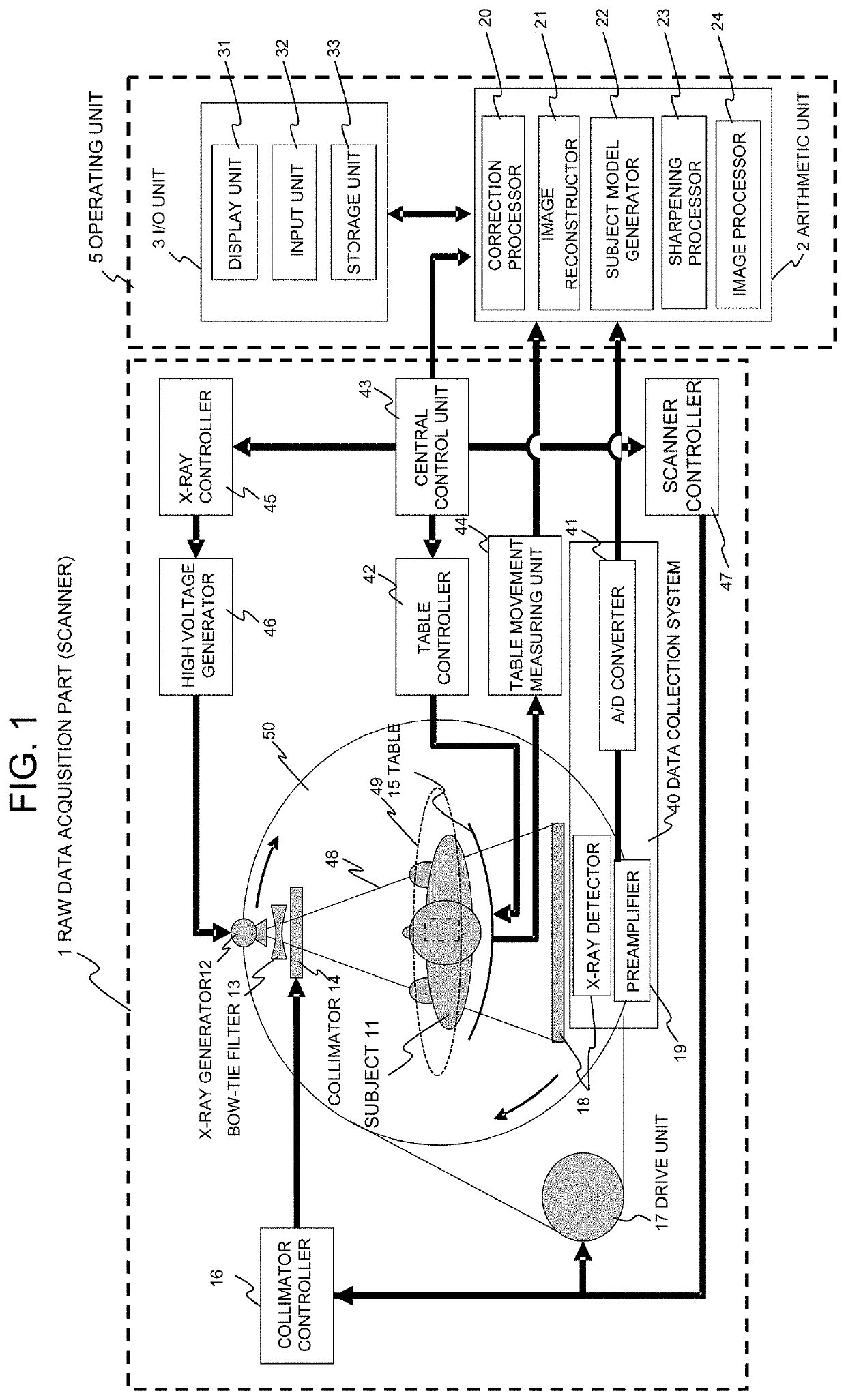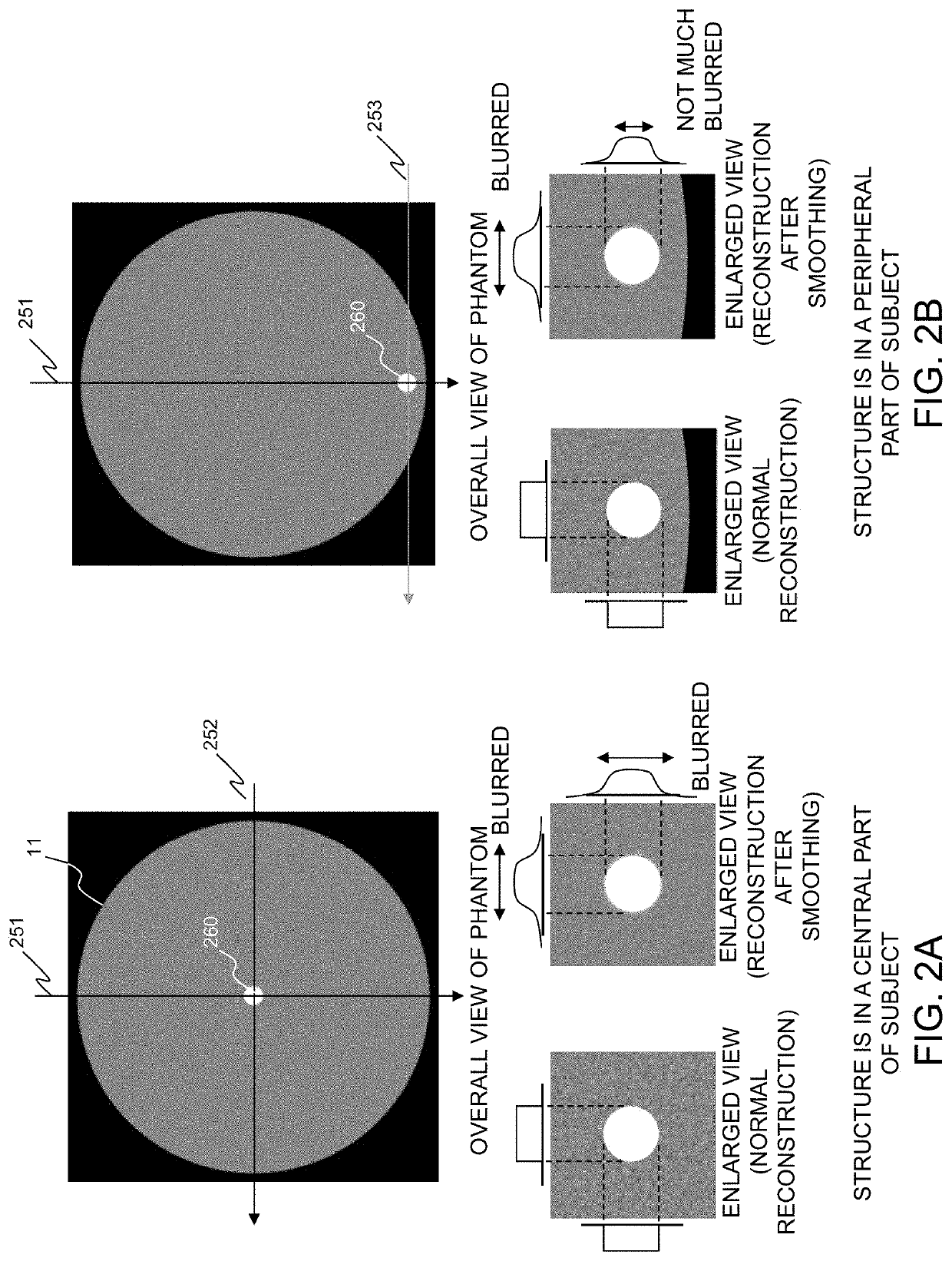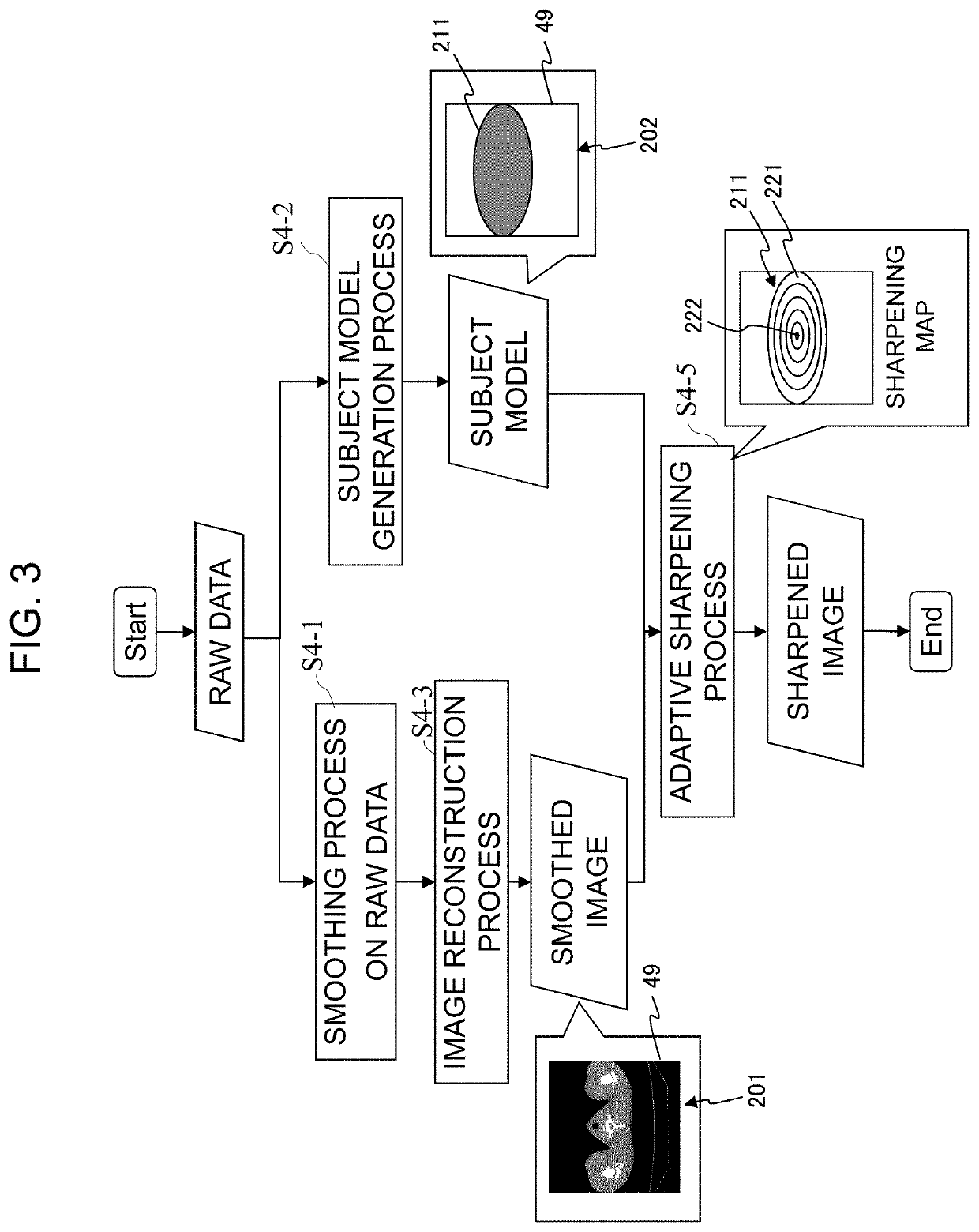X-ray ct scanner, image generation method, and image generation program
- Summary
- Abstract
- Description
- Claims
- Application Information
AI Technical Summary
Benefits of technology
Problems solved by technology
Method used
Image
Examples
first embodiment
[0031]FIG. 1 is a block diagram showing an overview of the X-ray CT system of the present embodiment. FIGS. 2A and 2B illustrate a structure positioned in a central part of a subject and the structure positioned in a peripheral part thereof, and reconstructed images of the structure. FIG. 3 is a flowchart showing the process of the X-ray CT system.
[0032]As shown in FIG. 2A, X-rays passing through the structure 260 positioned in the central part of the subject 11 always pass through the center of the subject 11, when applied from any directions 251 and 252, allowing the X-ray to pass through the subject 11 for a long distance. On the other hand, as for the X-rays passing through the structure 260 positioned at the periphery part of the subject 11, there is a direction 253 that allows the X-ray to pass through the subject 11 for a short distance. The detected signals of the X-ray passing through the structure 260 positioned in the central part of the subject 11 are likely to include m...
second embodiment
[0047]With reference to FIG. 4 and other related figures, there will be described the X-ray CT system of the second embodiment. The elements already described in the first embodiment are labeled with the same reference numerals, and redundant descriptions will not be provided.
[0048]FIG. 4 is a perspective view showing an outward appearance of the X-ray CT system according to the first embodiment. As illustrated in FIGS. 1 and 4, the X-ray CT system of the first embodiment is provided with a raw data acquisition part (hereinafter referred to as a scanner) 1, a table 15 for moving a subject placed thereon, an I / O unit 3, and arithmetic unit 2. The I / O unit 3 includes an input unit 32 comprising a mouse and a keyboard configured to input parameters for measurement and reconstruction, such as table moving speed information and a position for reconstruction, and a display unit 31 configured to display a reconstructed image and other information.
[0049]As illustrated in FIG. 1, the scanner...
third embodiment
[0092]There will now be described the X-ray CT system of the third embodiment.
[0093]In the second embodiment, the shape of the subject 11 is approximated by the ellipse 211, so as to create the subject model 202, but in approximating the actual subject 11, there may be found some disagreement in the shape of the ellipse 211, in approximating the actual subject 11. Since X-ray detection strength changes abruptly around the body surface or bones of the subject 11, the signal reduction level varies significantly in response to such changes. Therefore, around the body surface or bones of the subject 11, the disagreement in shapes between the ellipse 211 and the subject 11 may have significant impact on the image quality. For example, around the body surface of the subject 11, adjacent detector elements may detect the X-rays passing through the subject 11, and the X-rays passing through the air, respectively. Therefore, when the ellipse 211 being provided is larger than the region of the...
PUM
 Login to view more
Login to view more Abstract
Description
Claims
Application Information
 Login to view more
Login to view more - R&D Engineer
- R&D Manager
- IP Professional
- Industry Leading Data Capabilities
- Powerful AI technology
- Patent DNA Extraction
Browse by: Latest US Patents, China's latest patents, Technical Efficacy Thesaurus, Application Domain, Technology Topic.
© 2024 PatSnap. All rights reserved.Legal|Privacy policy|Modern Slavery Act Transparency Statement|Sitemap



